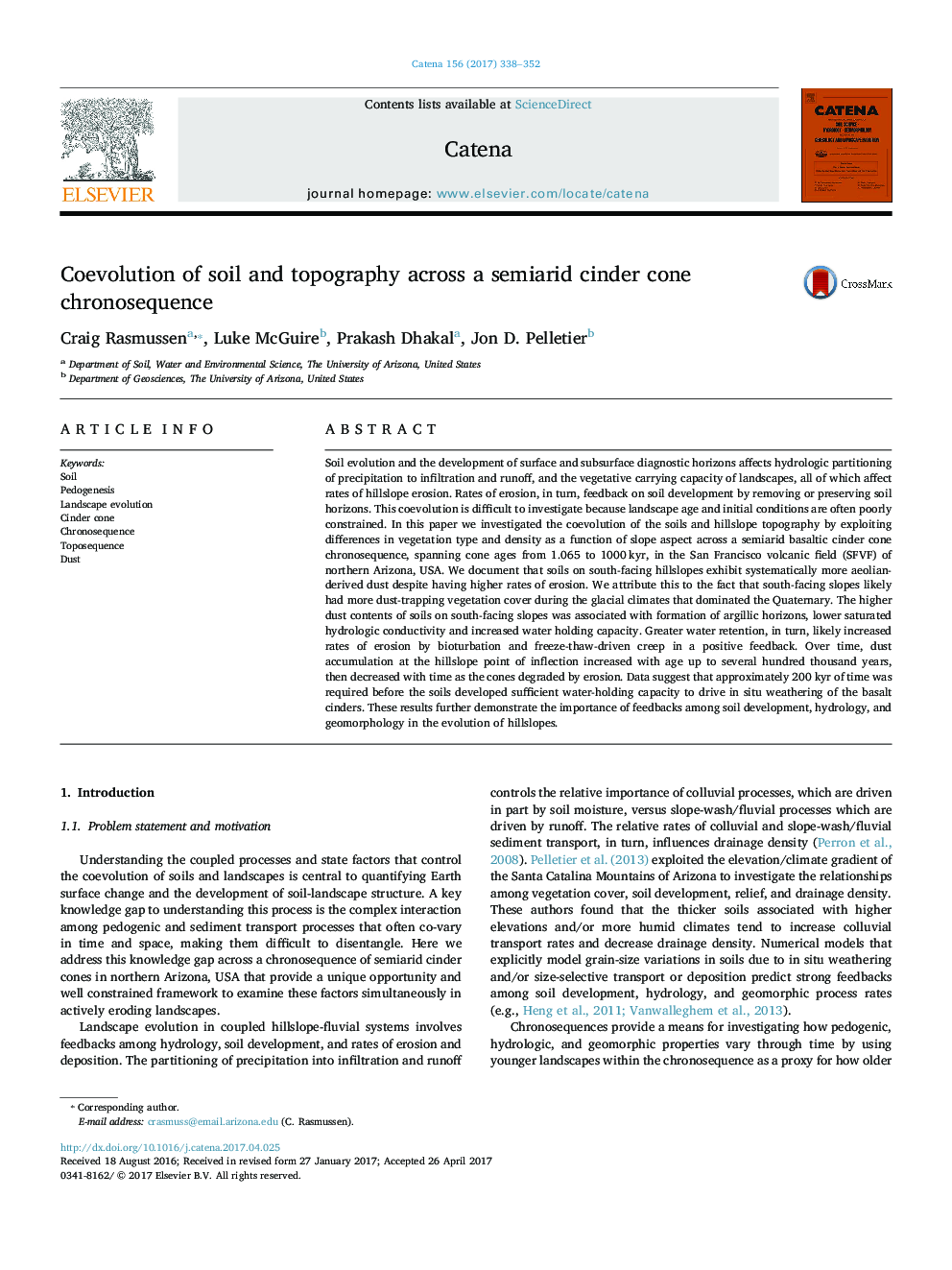| کد مقاله | کد نشریه | سال انتشار | مقاله انگلیسی | نسخه تمام متن |
|---|---|---|---|---|
| 5770009 | 1629198 | 2017 | 15 صفحه PDF | دانلود رایگان |
عنوان انگلیسی مقاله ISI
Coevolution of soil and topography across a semiarid cinder cone chronosequence
دانلود مقاله + سفارش ترجمه
دانلود مقاله ISI انگلیسی
رایگان برای ایرانیان
کلمات کلیدی
موضوعات مرتبط
مهندسی و علوم پایه
علوم زمین و سیارات
فرآیندهای سطح زمین
پیش نمایش صفحه اول مقاله

چکیده انگلیسی
Soil evolution and the development of surface and subsurface diagnostic horizons affects hydrologic partitioning of precipitation to infiltration and runoff, and the vegetative carrying capacity of landscapes, all of which affect rates of hillslope erosion. Rates of erosion, in turn, feedback on soil development by removing or preserving soil horizons. This coevolution is difficult to investigate because landscape age and initial conditions are often poorly constrained. In this paper we investigated the coevolution of the soils and hillslope topography by exploiting differences in vegetation type and density as a function of slope aspect across a semiarid basaltic cinder cone chronosequence, spanning cone ages from 1.065 to 1000Â kyr, in the San Francisco volcanic field (SFVF) of northern Arizona, USA. We document that soils on south-facing hillslopes exhibit systematically more aeolian-derived dust despite having higher rates of erosion. We attribute this to the fact that south-facing slopes likely had more dust-trapping vegetation cover during the glacial climates that dominated the Quaternary. The higher dust contents of soils on south-facing slopes was associated with formation of argillic horizons, lower saturated hydrologic conductivity and increased water holding capacity. Greater water retention, in turn, likely increased rates of erosion by bioturbation and freeze-thaw-driven creep in a positive feedback. Over time, dust accumulation at the hillslope point of inflection increased with age up to several hundred thousand years, then decreased with time as the cones degraded by erosion. Data suggest that approximately 200Â kyr of time was required before the soils developed sufficient water-holding capacity to drive in situ weathering of the basalt cinders. These results further demonstrate the importance of feedbacks among soil development, hydrology, and geomorphology in the evolution of hillslopes.
ناشر
Database: Elsevier - ScienceDirect (ساینس دایرکت)
Journal: CATENA - Volume 156, September 2017, Pages 338-352
Journal: CATENA - Volume 156, September 2017, Pages 338-352
نویسندگان
Craig Rasmussen, Luke McGuire, Prakash Dhakal, Jon D. Pelletier,